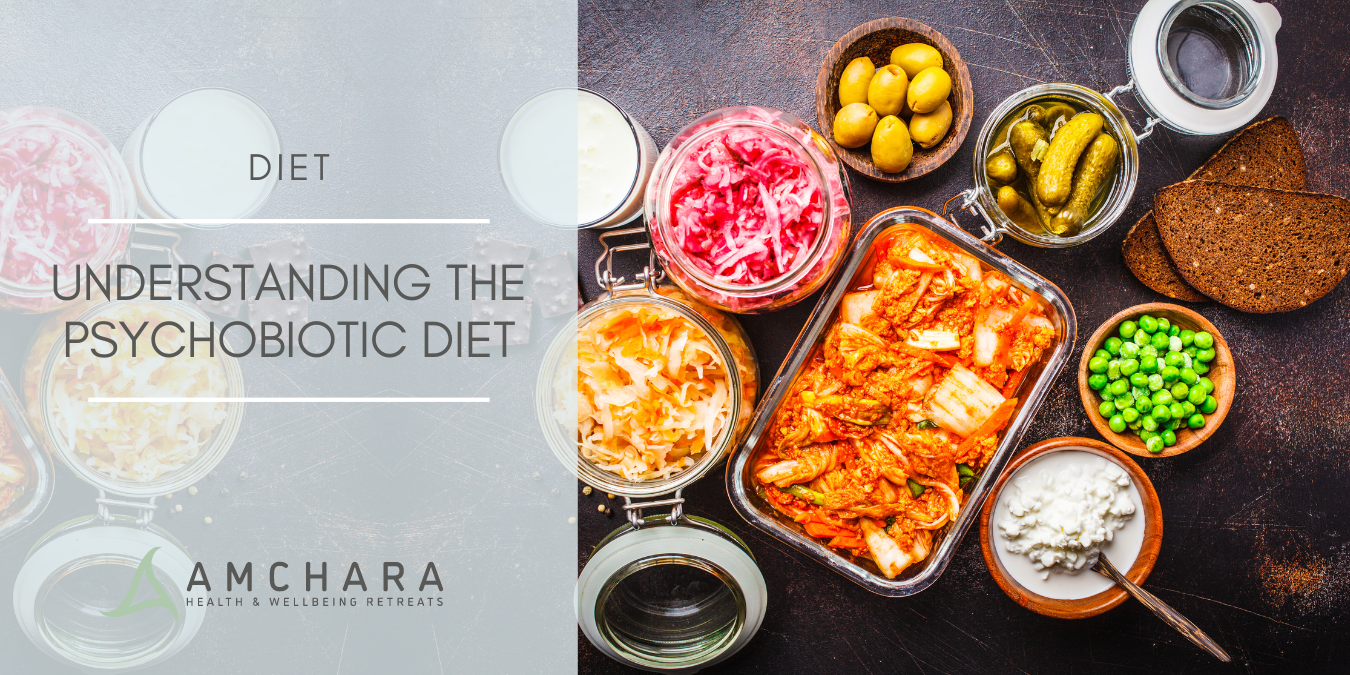Table of contents:
4. Starting your fasting journey
An introduction to fasting
Fasting is a long-established practice dating back thousands of years, going back to our hunter-gatherer ancestry when there were long gaps in between meals and the availability of food was unpredictable and inconsistent.
Many religions still incorporate fasting at certain times of the year.
Interest in fasting is increasing partly due to many research papers being published on the benefits of fasting on health.
There are several types of fasts and it can be confusing, as many terms are used.
Add in the fact that sometimes there are no clear definitions used when describing ‘fasting’ and it is easy to see why you can be left feeling puzzled.
In the modern internet world there is an overwhelming amount of information and it can be hard to find health advice that you can trust, particularly as the main media channels are typically dominated with a single, orthodox narrative.
So we’re going to take a look at some of the common fasting terms and their interpretation.
Types of fasting explained
- Defining a fast
A true fast involves abstaining from food for a set period of time, water can be consumed but anything that contains calories would need to be eliminated.
It can be common to hear the term ‘fasting’ when referring to specific types of calorie restricted eating plans, but it is important to note that eating or drinking anything with a calorie content actually slows down or inhibits some of the processes that are linked to the health benefits of fasting.
- Water fasting
Water fasting refers to an extended period of time consuming only water.
This can be for a period of 12 hours or more and many people incorporate a full 24 hour water fast into their lives on a weekly or monthly basis.
Water fasts can last for much longer periods, such as several days – some people undertake 3-5 day water fasts up to 2 to 3 times a year.
A water fast is the most difficult type of fast to do as the body may be denied food for extended periods of time – this kind of fast is not always suitable for everyone.
Before embarking upon a water fast it is always advisable to seek guidance from an experienced professional who can advise whether it is suitable for you and ensure your body is supported fully.
- Intermittent fasting
This a term that is used widely and covers many aspects of fasting patterns.
Essentially, as the word intermittent implies, it involves periods of abstaining from food followed by periods of eating.
Many people choose to carry out intermittent fasting overnight as no food is eaten during sleep.
Intermittent fasting can describe the alternate day fast, where every other day involves a water fast, or the Eat Stop Eat plan, where there are one or two 24 hour water fasts per week.
The 16:8 fast and 20:4 fast are also types of intermittent fasts that can also fall under the time restricted eating (TRE) heading.
- Time restricted eating
This is a newer term and developed from animal studies which referred to time restricted feeding.
It describes a period of fasting without food each day followed by a set ‘eating window’.
One of the most common is the 16:8 fast.
This involves an eating period of 8 hours and only water is consumed during the other 16 hours.
Typically, a person may choose to only eat between 9am and 5pm, or 11am and 7pm and many of the fasting hours are completed whilst asleep.
This type of eating can also be broken down so not all days follow this pattern. Some people choose to follow the 16:8 plan for 5 days and have no timing restrictions on food intake on 2 days.
This may be an easier way to follow the 16:8 plan and can also fit in with family and social activities.
The 20:4 diet, also called the Warrior diet, involves a full 20 hours without food and eating food only in one 4 hour window, usually in the evenings.
The research on time restricted eating is evolving and some experts are suggesting that timing the ‘eating window’ to coincide with daylight hours and the natural circadian rhythm gives more benefit (1).
Studies on when exactly to start the ‘eating window’ indicate that early time restricted eating, which refers to eating earlier in the day and stopping before evening, and limiting food intake to 6 hours is more beneficial than spreading food intake over a 12 hour period (2).
Modified fasts
A modified fast describes an adjustment of food intake in a set period of time, this could be calorie restriction on one or more days during the week, or eating a set percentage of fats, proteins and carbohydrates on 2-5 days.
- 5:2
The well publicised 5:2 diet, made famous by Dr Michael Mosley on a BBC Horizon programme, involves calorie restriction on two non-consecutive days of the week.
Only 500-600 kcals are consumed on these 2 days, the remaining 5 days allow for a normal calorie intake (3).
Although this isn’t technically fasting it is also referred to as the ‘Fast diet’.
- Fast 800 – blood sugar diet
A more recent type of modified fast advocated by Michael Mosley is the Fast 800 diet – designed to enhance fat loss and balance blood sugar.
The diet essentially involves eating 800 calories per day for up to 8 weeks and follows a low carb, Mediterranean style of eating.
There is also an option to follow a 5:2 style eating pattern and only restrict calories to 800 per day on 2 days a week but follow the low carb, Mediterranean style of eating on the other 5 days (4).
- Alternate day modified fast
In this type of modified fast there is restriction of calories on one day and normal calorie intake on the next day, this pattern is repeated long term.
Calories may be restricted by 75-85% of daily calorie needs.
Some feel that allowing a normal calorie intake every other day may make it easier than continuous calorie restriction or intermittent fasting and therefore increases adherence (5).
- Fasting mimicking diet
First developed by Professor Valter Longo after 30 years of research into longevity, the fasting mimicking diet (FMD) involves eating a specific amount of fats, proteins and carbohydrates for 5 days, during this time calories are also restricted.
The FMD states that on day one 34% carbohydrates, 10% protein and 56% fat should be eaten, on the remaining days 47% carbohydrates, 9% protein, and 44% fat are eaten.
Calories are restricted to around 34-54% of daily energy requirements.
This pattern of eating is recommended every 3-6 months (6).
- Fasting mimicking ketogenic diet
This is where the FMD has been adjusted and nutrient intake is manipulated, such as in the ketogenic diet, and adhered to for 5 days every 3-6 months, as in the original FMD.
Typical balance of macro nutrients for a ketogenic diet involves eating 60-75% fat, 15-30% protein and 5-10% carbohydrates.
It is claimed that this type of FMD puts the body into a state of fat burning a lot quicker than the original FMD.
- Juice cleansing
This popular modified fast involves restricting calories and maximising intake of vitamins, minerals and phytonutrients through 3-6 fresh juices a day.
Fruit and vegetables contain a wide variety of nutrients and extracting these by using a juicer concentrates the nutrients, allowing for a higher intake.
This may help the body in breaking down and removing toxins and support natural cell cleansing processes.
Many of the health benefits of fasting may stem from enhanced body cleansing.
If you are confused by terminology and abbreviations often used when it comes to fasting, then the table at the end of this article may help to shed some light.
What happens during a fast
The body is a clever machine and has many processes that allow it to adapt to changes.
In fact, the way the human body adapts is fascinating and incredibly complex.
Many scientists, naturopaths and health experts firmly believe that if the body’s adaptation processes are faulty it results in poor health.
- Switching energy sources
Within today’s society food has become abundant, we can drive down to the local shop to buy ingredients for our meals or snacks and no longer have to hunt or gather.
Plus we are now eating more food more frequently than ever.
The body becomes reliant upon this food abundance and will use what is eaten for energy and store the excess.
High carbohydrate diets, particularly those rich in refined carbohydrates or simple sugars, mean that the body is mostly running on glucose as an energy source.
During a fast, as no food is eaten the body has to adapt and lean on stored energy.
The human body stores energy in several places for use when food is scarce.
The first stored energy used during a fast is in the form of glycogen which is broken down to form glucose.
It is primarily stored in the liver and muscle tissue – around 100-120g of glycogen is found within the liver and 400g in skeletal muscle tissue (7).
Glycogen stored in muscle tissue is reserved for use by the muscle tissue itself and is not available for other cells to use.
However when the muscles rely on their own glycogen for energy, the uptake of glucose from the blood is restricted meaning it is available for tissues elsewhere in the body.
Liver glycogen is available for other tissues within the body.
Once glycogen stores are becoming depleted, which can take between 8 and 18 hours depending on activity levels (8,9), the body has to switch to another stored energy source – fat.
The liver is responsible for the generation of glucose from other nutrients like fat and amino acids found in protein.
Although there are some amino acids used in this energy production (called gluconeogenesis), the majority of energy comes from fat breakdown.
Fat is broken down to form ketones – these can be used by the body and brain for fuel.
Many experts liken the switching of using ketones for energy versus glucose as similar to using a cleaner, more efficient fuel in vehicles such as biodiesel.
Fat burning obviously leads to weight loss and many people report healthy weight management from regular fasting.
- Toxin removal
Fat cells are able to store fat soluble toxins such as preservatives, pesticides, heavy metals, pollutants, food additives and other environmental chemicals.
They can also be stored in the brain and may circulate in the blood.
Unhealthy levels of toxins are linked to many chronic or degenerative conditions including auto-immune disease (10), brain tumours (11), hormone disorders, cardiovascular disease and diabetes (12).
As fat tissue is being broken down during fasting, there can also be a release of toxins and wastes – some people may experience headache, fatigue, nausea, skin issues.
This is sometimes described as similar to how you feel with a hangover.
Poor liver function may affect how the toxins are removed, as the liver is responsible for the breakdown and removal of toxins.
The length of time you fast for is also a factor in how fast, or slowly, toxins are released.
A prolonged water fast over several days is more likely to speed up toxin removal than a 12 hour fast.
Mobilising and removing toxins is a positive step but, depending on the degree of toxin accumulation, may need to be done at a slower rate and the fasting method may need to be adjusted.
- Insulin and glucagon
As the body adapts its source of fuel to fat, there is no longer the need to secrete high levels of insulin.
Insulin is a hormone produced by the pancreas and serves to move glucose out of the blood and into body cells to be used as energy.
It also directs excess glucose into storage in fat cells.
Glucagon is the opposing hormone to insulin and is responsible for mobilising those energy stores and kick starting the generation of glucose from fats and proteins.
So, when insulin is high, glucagon is low and vice versa.
Modern eating patterns and carbohydrate laden diets mean that insulin release is often high.
This can lead to a situation called insulin resistance where body cells become ‘deaf’ to the message of insulin and do not respond – this carries major health risks such as diabetes.
As fasting restricts food intake it has been shown to give better insulin balance and improve sensitivity to insulin (13,14,15).
- Leptin and ghrelin
These two hormones work together, and with other hormones, to control appetite.
Leptin is known as the satiety hormone and is responsible for making you feel full.
Ghrelin does the opposite and is released by cells in the stomach and stimulates hunger.
Imbalances between these two hormones may lead to poor appetite control and weight gain.
Leptin levels may be high in obesity, this sounds quite confusing as you would then expect those with obesity to feel full rather than hungry and therefore eat less.
The trouble is that like insulin resistance, high leptin leads to cells ‘ignoring’ the effects of leptin and becoming resistant – thus hunger is not switched off.
Fasting has been shown to reduce levels of leptin, to increase sensitivity and to give better appetite control. In fact, many people who fast regularly say they no longer feel ‘hunger pangs’ and do not feel the need to over eat.
- Growth hormone
Growth hormone, also called somatotropin, is released from the pituitary gland and plays a role in growth during childhood and adolescence.
Although secretion of growth hormone declines with age, it continues to be involved in many functions in the body including:
- Bone strength
- Muscle mass
- Breakdown of fats
- Healthy metabolism
- Healing and repair
- Immune function
Like many hormones, growth hormone needs to be kept in balance.
Too much or too little not only leads to growth issues in childhood but can also increase the risk of diabetes and cardiovascular issues (16).
Growth hormone is released in pulses, with the highest levels seen in the early hours of the morning whilst asleep.
Growth hormone does not stay in the blood for long and is converted to IGF-1 by the liver, many of the growth promoting effects are down to IGF-1.
Again, there is a fine balance with IGF-1 – too much has been linked to an increase in certain cancers (17).
The body regulates the fine balance between hormones and some hormones may affect the secretion of growth hormone.
There is a link between insulin and growth hormone and high insulin (also seen in cases of insulin resistance) reduces secretion of growth hormone.
With the reliance on glucose as an energy source insulin levels may remain high which may lead to an overall suppression of growth hormone.
During fasting there is a drop in insulin levels and growth hormone can be seen to rise dramatically (18) but stay within healthy levels.
Growth hormone may also be stimulated by exercise, sleep and trauma.
- Self-cleansing
Whilst energy stores are being mobilised the body not only removes toxins but also has a chance to cleanse and repair in other areas.
Many of the processes involved are suppressed when food is eaten in abundance.
- Migrating motor complex
The digestive tract is no longer focused on breaking food down but can cleanse and strengthen the lining – an important barrier.
Waves of sweeping contractions along the gastro-intestinal tract, called the migrating motor complex (MMC), help to dislodge waste from the lining and eliminate any unwanted bacteria or other pathogens.
This helps the balance of the microbiome, the complex ecosystem within the gut (19).
MMC contractions occur mostly in between meals, around every 45-180 minutes, and eating interrupts the process. So, snacks between meals may inhibit gut cleansing.
It seems MMC is also slower at night and so a fasting period during the day may enhance the process (20).
- Autophagy
After around 12-16 hours of fasting, a process called autophagy is enhanced.
This is a natural self-cleansing that occurs in body cells and serves to remove damaged and dangerous molecules as well as reducing inflammation and supporting regeneration.
Autophagy is vital for the health of body cells and impaired autophagy has been linked to cardiovascular disease and neurodegenerative conditions like Alzheimer’s and Parkinson’s.
Autophagy also plays a role in infection, immunity and many inflammatory diseases (21).
- Microbiome balance
The human gut carries trillions of organisms that make up what is termed the microbiome.
These organisms play vital roles in health and not only support digestion and gut functioning but also play an important part in immune function, hormone balance, weight management and mental health.
It is well known that changes in the types of food eaten can impact microbiome balance within as little as 24 hours. What is now also apparent is that when food is consumed may be just as important.
Fasting, particularly time restricted eating in line with natural circadian rhythms, can give favourable effects to microbiome balance (22).
Benefits of fasting
It is clear from the many actions that occur during fasting that there are profound benefits to health, this is not just to physical health but also to mental health.
Fasting used to be part of day to day life and modern eating patterns, twinned with ultra-processed foods and high sugar intakes, mean that the body is not being allowed to undertake vital processes for cleansing and repair.
This may be one of the reasons why chronic and degenerative conditions are on the rise.
Re-introducing periods of fasting can reset many functions within the body and aid in optimal health.
Starting your fasting journey
With so many different types of fasting it can be hard to know where to start.
It is worth noting that not all people should fast and it is advisable to seek guidance from an experienced practitioner first, particularly if you have a medical condition or take prescription medicines.
A good place to start is to try a 12 hour fast overnight.
This could mean eating your last meal of the day no later than 7pm and breakfast could be eaten at 7am.
These timings could be adjusted according to your daily routine.
Although some of the research indicates that eating food later at night may not be as beneficial, some adjustments to timings to suit your lifestyle may be needed.
As long as you do not eat beyond 8pm and are able to fast for 12 hours or more you may still gain benefits.
Once you get used to a 12 hour fast you can increase the time by 1 hour every week or so until you reach 16 hours without food.
You may wish to do the 16 hour fasts 5-6 days a week and take a break at weekends.
If your health allows and you have no problems with a 16 hour fast you could incorporate a full 24 hour water fast once every 2-3 weeks.
If you prefer to do a modified fast, then the 5:2 plan could be useful as it allows eating every day but still gives many health benefits.
There are also some good resources to assist with ‘fasting’ days such as here.
Juice cleanses can be another useful starting point as they incorporate vital plant nutrients to support the body.
A health retreat that specialises in juice cleansing and personalised advice and support can make the process more of an experience.
Qualified practitioners can guide you on how to work to achieving optimal health.
The key is to find what works for you and to look at the types of foods you are consuming in your ‘eating window’.
Fasting has many benefits but continuing to eat foods high in sugar, refined flours or saturated fats is unlikely to give the same health benefits.
The following healthy eating guidelines may be of use:
- Eat a wide variety of fresh fruits and vegetables- -the more colours the better. Plants are rich in beneficial compounds that offer protection for the body. A rainbow food wheel can be a good way to track your daily intake.
- Choose grass fed organic poultry and meat – it has a better balance of the omega fats and less antibiotics are used. The animal’s welfare standards are also better.
- Include oily fish like mackerel, sardines, pilchards, trout, salmon and herring at least twice a week – they are rich in omega-3 fatty acids that support the cardiovascular system and can be used in the body to reduce inflammation.
- Include good proteins with each meal – protein provides building blocks for muscles, hormones and the immune system. Alongside organic grass fed poultry and meat and fish, good proteins include eggs, beans, tofu and tempeh.
- Include nuts and seeds – they are rich source of minerals and contain good fibre that helps to support the bowel.
- Stay hydrated – drink at least 2 litres of water a day. Water helps to flush out toxins, keeps the bowel moving, aids brain functioning and can support liver function.
- Include fermented foods like sauerkraut, kimchi, tempeh, miso and natto – they are rich in beneficial bacteria and further support the gut and elimination.
- Avoid sugars and highly refined foods – these cause a rise in insulin which may interfere with some fasting processes.
Start your fasting journey slowly and keep your mind active when you are fasting – this helps to prevent mindless eating and helps manage cravings and hunger.
Once you get in the swing of things you can find you no longer think about food when fasting.
Whichever method of fasting you wish to try the end results will be worth it.
Do you fast regularly?
Which methods have you tried?
We would love to hear your thoughts and experiences as they may help others begin their fasting journey to full health.
Please leave your comments below.
| Fasting terminology | ||
| Alternate day fasting | ADF | Fasting (zero food) every other day |
| Alternate day modified fast | ADMF | Restriction of calories one day and normal calorie intake on the next day |
| Caloric restriction | A reduction in calorie intake, no particular pattern attributed to this term | |
| Continuous energy restriction | CER | Calories restricted on all days of the week, such as in many standard ‘weight loss diets’ |
| Cyclical fasting | A broad term describing a pattern of fasting and eating, such as alternate day fasting and Eat Stop Eat | |
| Daily energy restriction | DER | Same as CER |
| Eat stop eat | A form of intermittent fasting involving one or two 24 hour water fasts per week | |
| Extended fast | Water fast of more than 24-36 hours | |
| Fasting mimicking diet | FMD | This is a pattern of eating a specific amount of fats, proteins and carbohydrates for 5 days, during this time calories are also restricted. The FMD states that on day one 34% carbohydrates, 10% protein and 56% fat should be eaten, on the remaining days 47% carbohydrates, 9% protein, and 44% fat are eaten. Calories are restricted to around 34-54% of daily energy requirements. This pattern of eating is recommended every 3-6 months. |
| Fasting mimicking ketogenic diet | FMKD | Nutrient intake is manipulated such as in the ketogenic diet and adhered to for 5 days every 3-6 months, as in the FMD. Typical balance of macro nutrients for a ketogenic diet involves eating 60-75% fat, 15-30% protein and 5-10% carbohydrates. |
| Intermittent energy restriction | IER | Describes short spells of severe calorie restriction between longer periods of eating. This term could be used alongside the term modified fast (5:2) or even to describe the alternate day fast method and the Eat Stop Eat diet. |
| Intermittent fasting | IF | Misused frequently, especially around eating patterns that are more of a calorie restricted plan, but essentially intermittent fasting involves a period of complete food restriction – either set hours during the day (TRE) or for the whole day |
| Juice cleansing | Often called juice fasting, this doesn’t involve abstaining from food entirely but restricting calories and maximising intake of vitamins, minerals and phytonutrients through 3-6 juices a day | |
| Modified fast | This is where food intake is adjusted for a period of time, this could be calorie restriction (e.g. 5:2, or alternate day modified fast) or juice cleansing where only fresh juices are consumed | |
| One meal a day | OMAD | A pattern of eating often seen on the Warrior 20:4 diet when food is eaten once a day in the evening. However, OMAD doesn’t state at what time of day food should be consumed |
| Time restricted eating | TRE | A form of intermittent fasting that restricts eating within a set window. The 16:8 and 20:4 diets are forms of TRE. In these fasting occurs for 16 hours and eating within the remaining 8 hours or fasting for 20 hours and eating within 4-hour window.
It may also be referred to time restricted feeding (TRF) and this term stems from research in animals, where they were given a feeding window. It may be further split into early time restricted feeding/eating (ETRF/ETRE) referring to the eating window starting earlier in the day, or late time restricted feeding/eating (LTRF/LTRE) where food is eaten in the later part of the day |
READ THIS NEXT:






